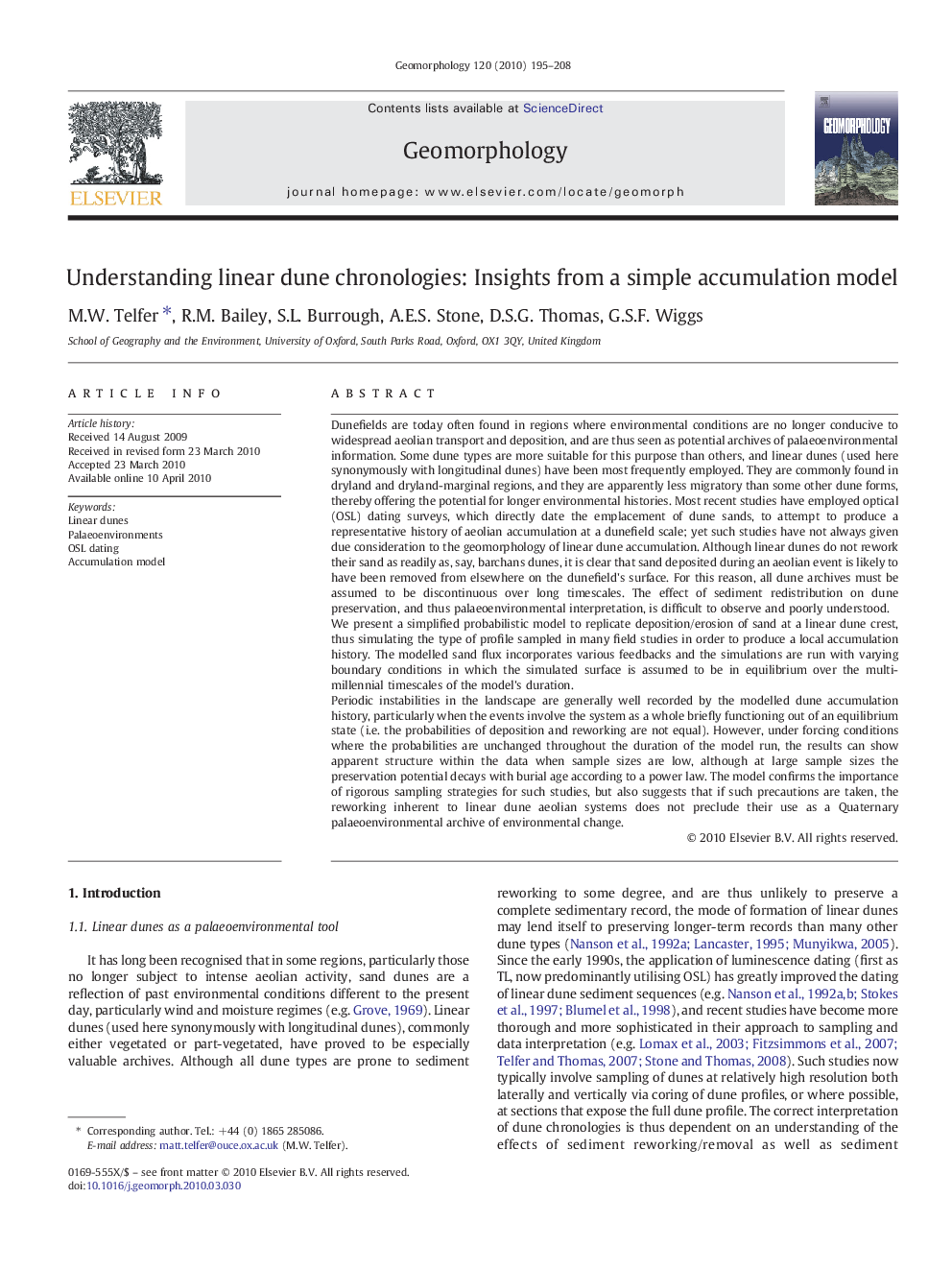| Article ID | Journal | Published Year | Pages | File Type |
|---|---|---|---|---|
| 4685751 | Geomorphology | 2010 | 14 Pages |
Dunefields are today often found in regions where environmental conditions are no longer conducive to widespread aeolian transport and deposition, and are thus seen as potential archives of palaeoenvironmental information. Some dune types are more suitable for this purpose than others, and linear dunes (used here synonymously with longitudinal dunes) have been most frequently employed. They are commonly found in dryland and dryland-marginal regions, and they are apparently less migratory than some other dune forms, thereby offering the potential for longer environmental histories. Most recent studies have employed optical (OSL) dating surveys, which directly date the emplacement of dune sands, to attempt to produce a representative history of aeolian accumulation at a dunefield scale; yet such studies have not always given due consideration to the geomorphology of linear dune accumulation. Although linear dunes do not rework their sand as readily as, say, barchans dunes, it is clear that sand deposited during an aeolian event is likely to have been removed from elsewhere on the dunefield's surface. For this reason, all dune archives must be assumed to be discontinuous over long timescales. The effect of sediment redistribution on dune preservation, and thus palaeoenvironmental interpretation, is difficult to observe and poorly understood.We present a simplified probabilistic model to replicate deposition/erosion of sand at a linear dune crest, thus simulating the type of profile sampled in many field studies in order to produce a local accumulation history. The modelled sand flux incorporates various feedbacks and the simulations are run with varying boundary conditions in which the simulated surface is assumed to be in equilibrium over the multi-millennial timescales of the model's duration.Periodic instabilities in the landscape are generally well recorded by the modelled dune accumulation history, particularly when the events involve the system as a whole briefly functioning out of an equilibrium state (i.e. the probabilities of deposition and reworking are not equal). However, under forcing conditions where the probabilities are unchanged throughout the duration of the model run, the results can show apparent structure within the data when sample sizes are low, although at large sample sizes the preservation potential decays with burial age according to a power law. The model confirms the importance of rigorous sampling strategies for such studies, but also suggests that if such precautions are taken, the reworking inherent to linear dune aeolian systems does not preclude their use as a Quaternary palaeoenvironmental archive of environmental change.
